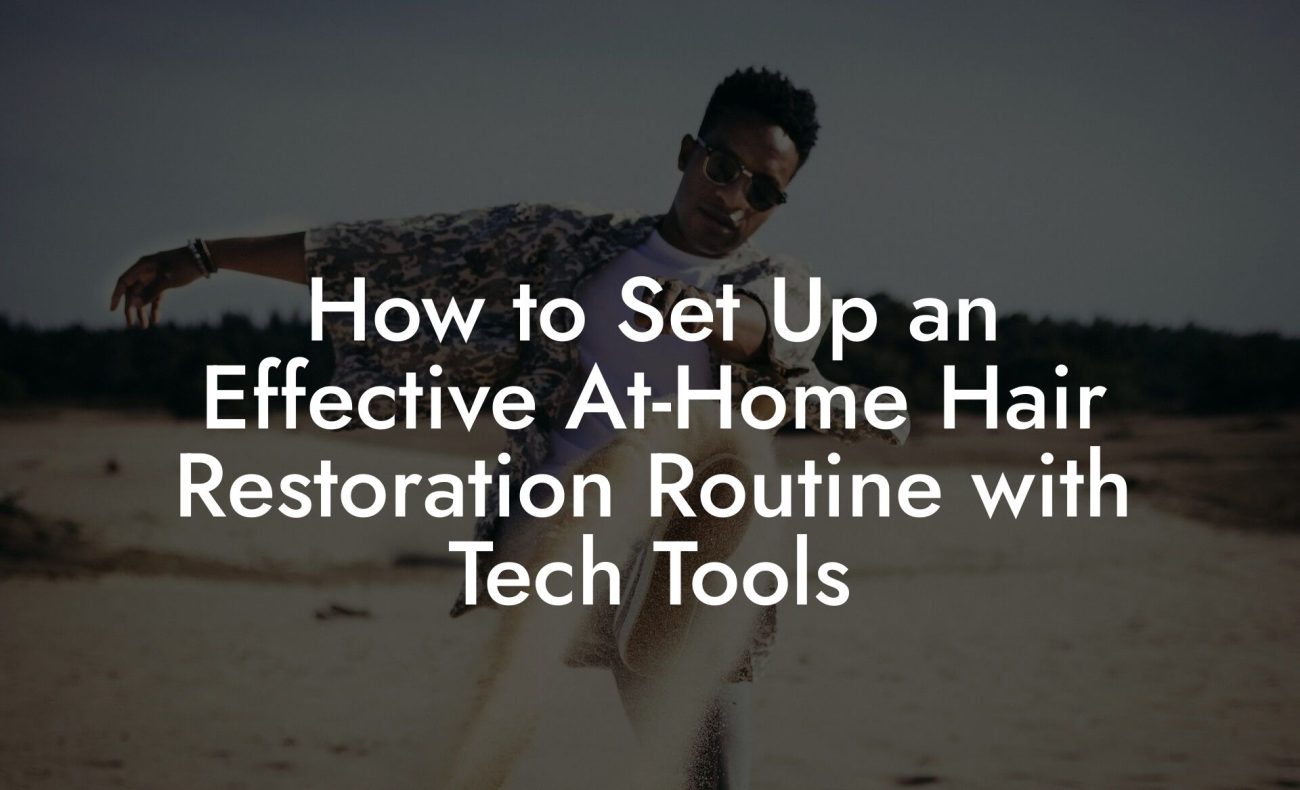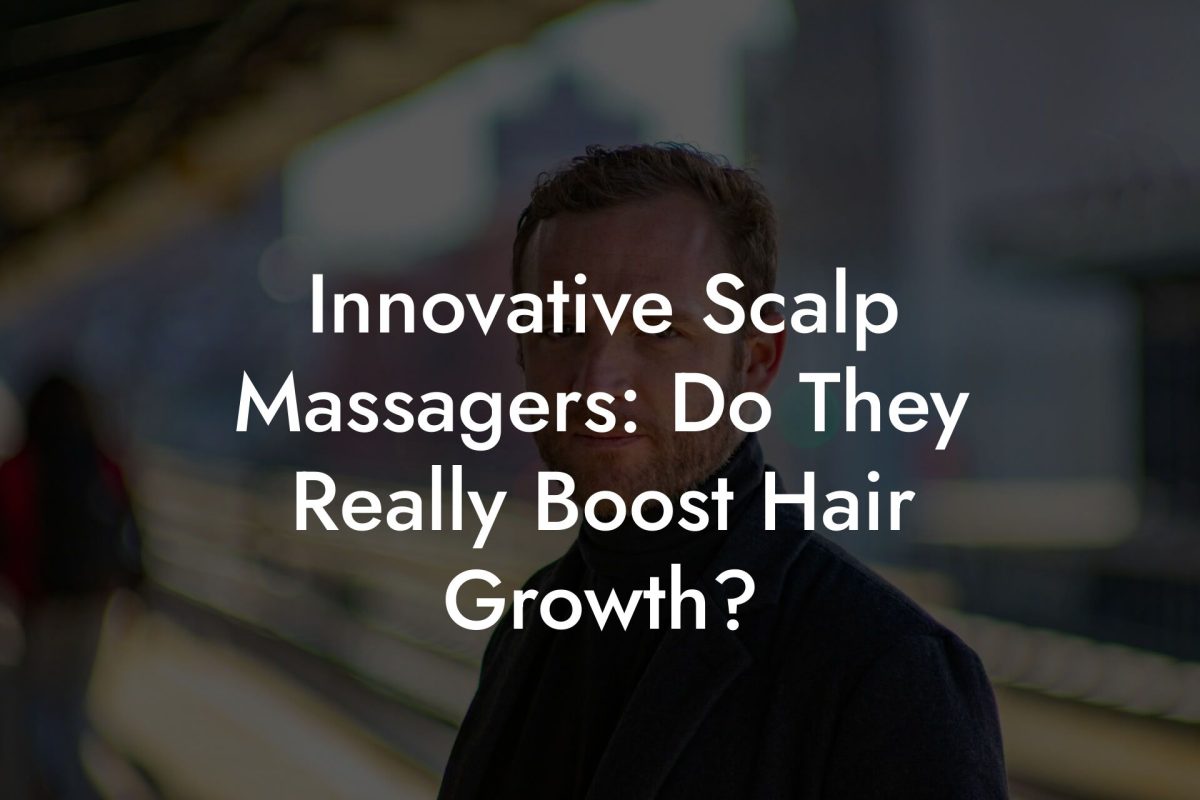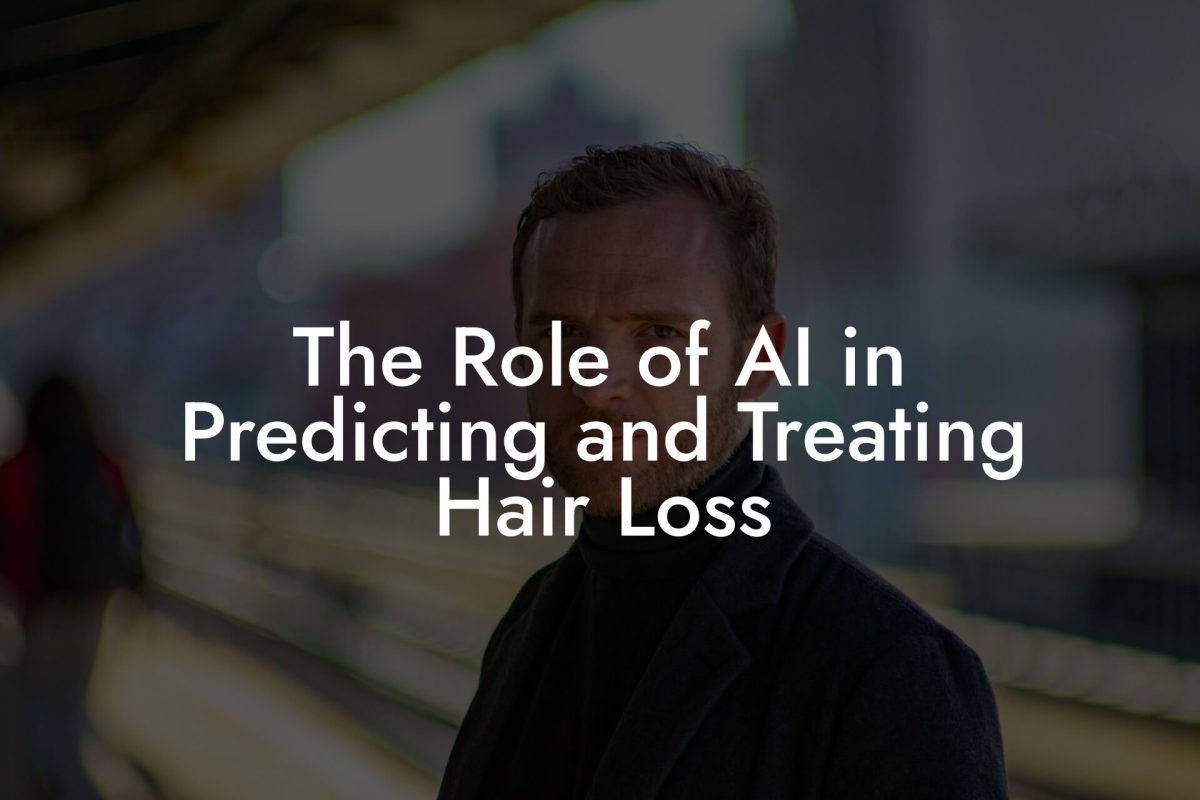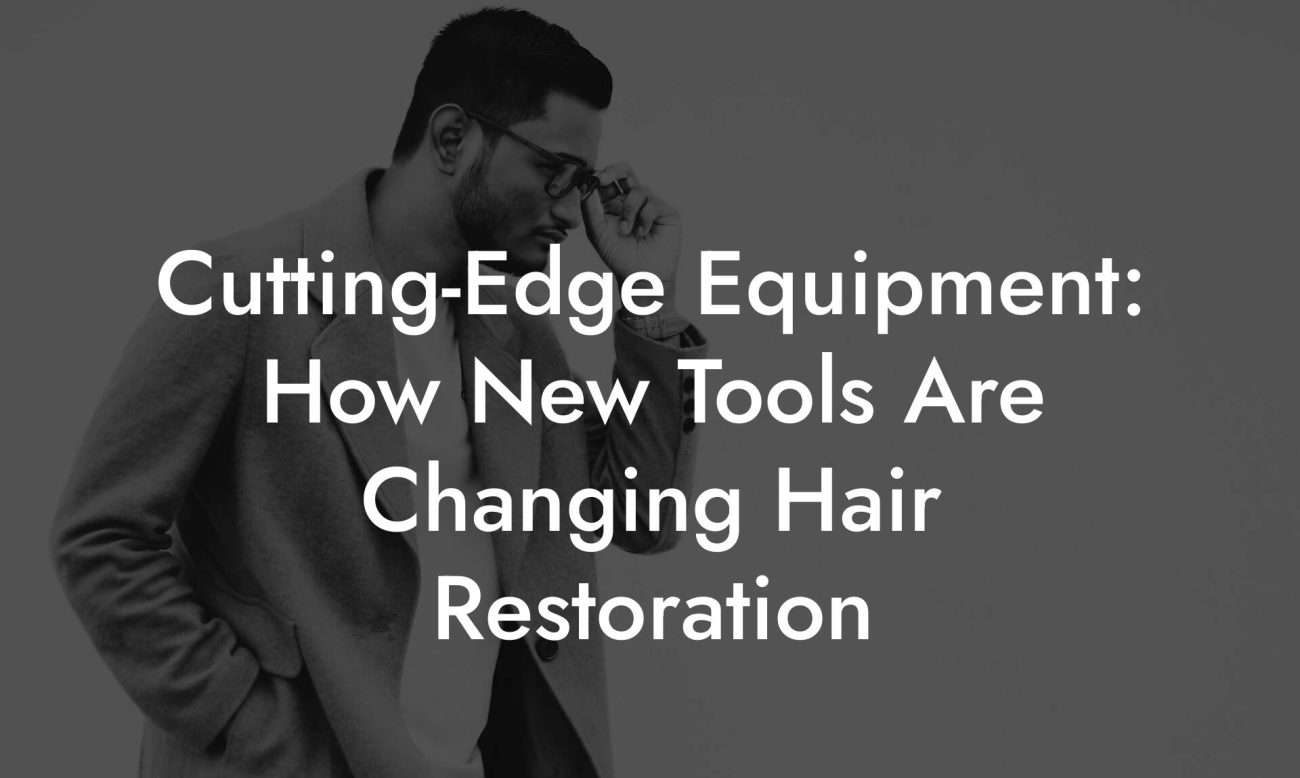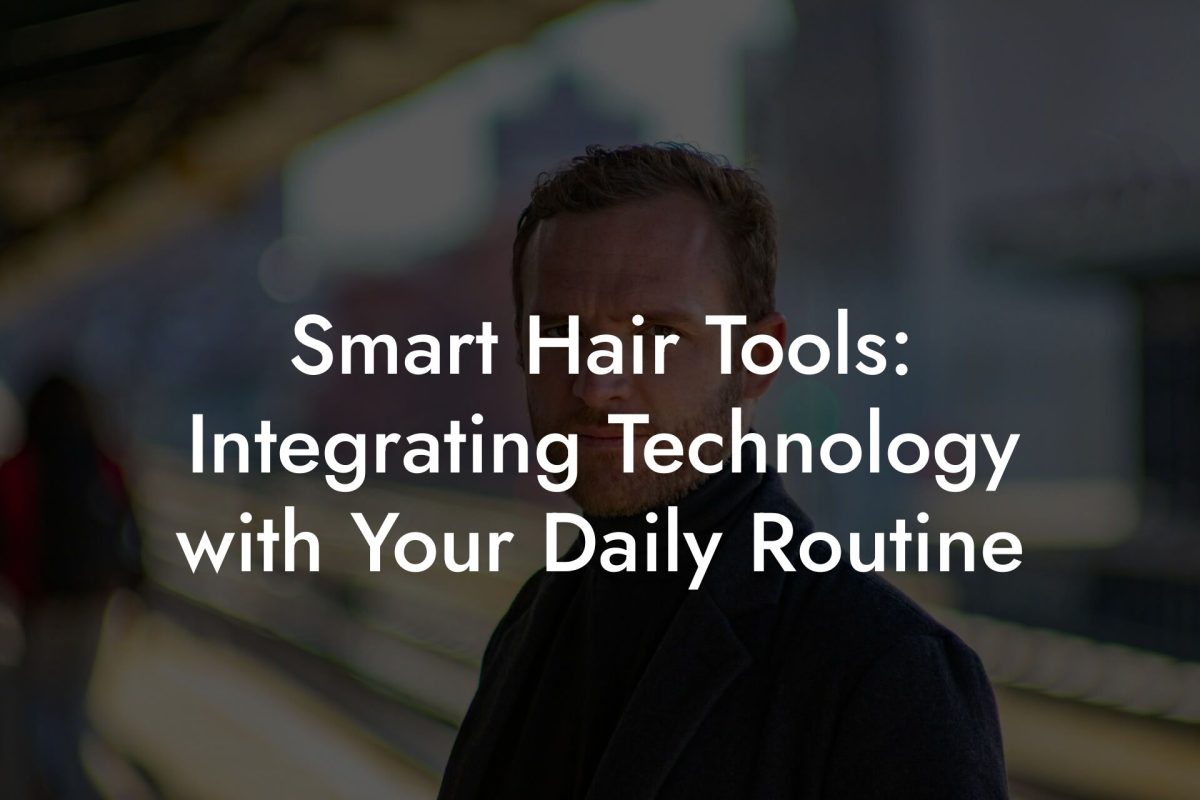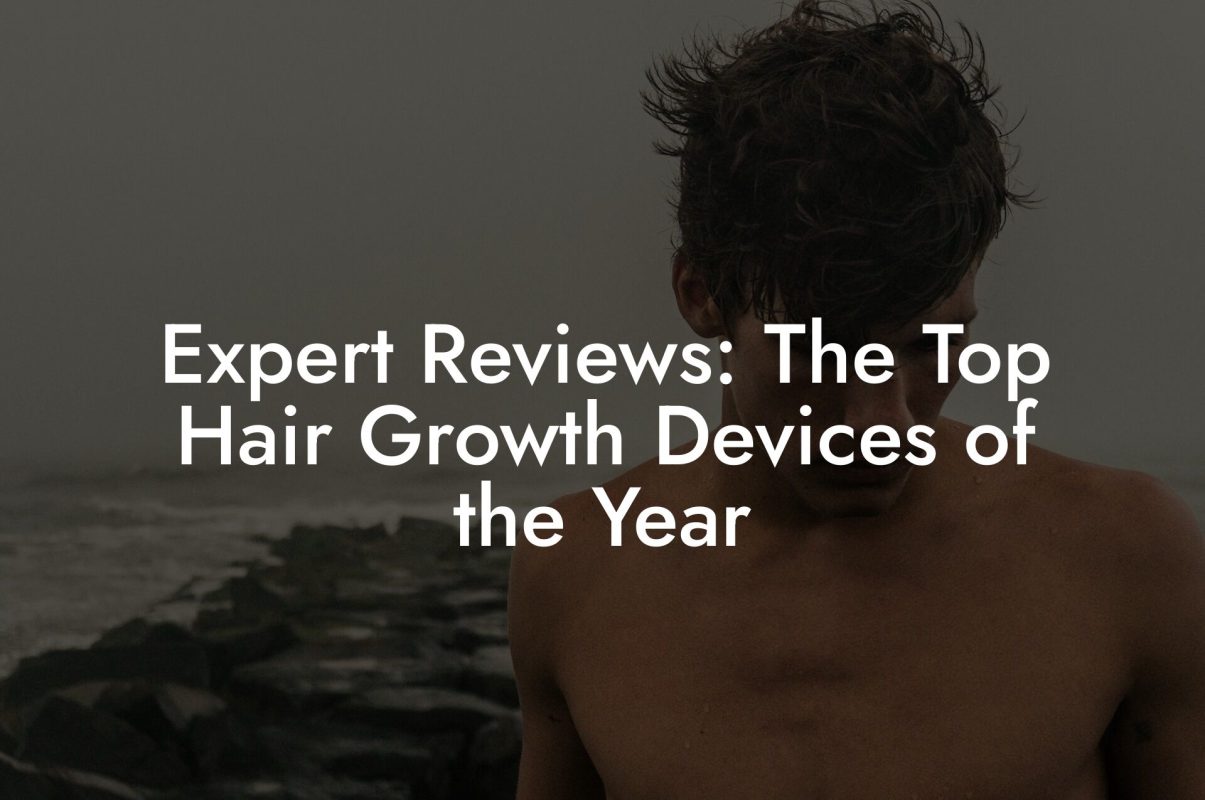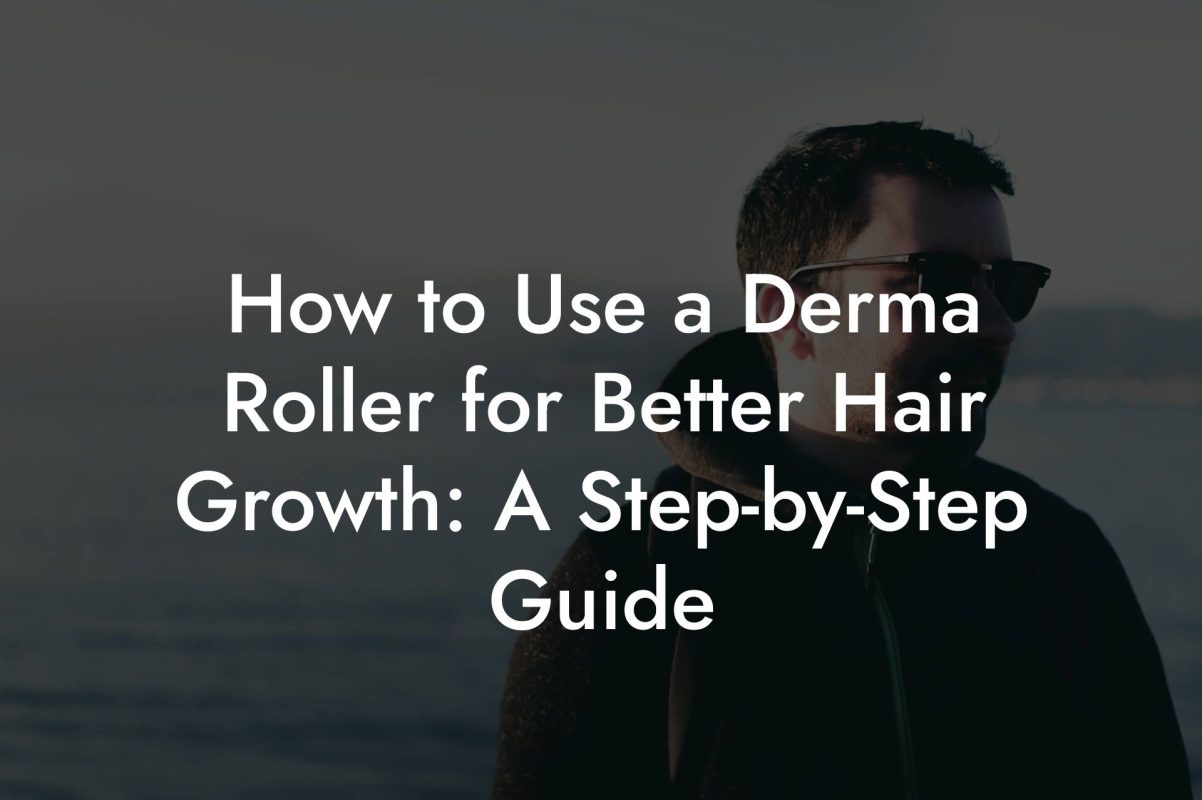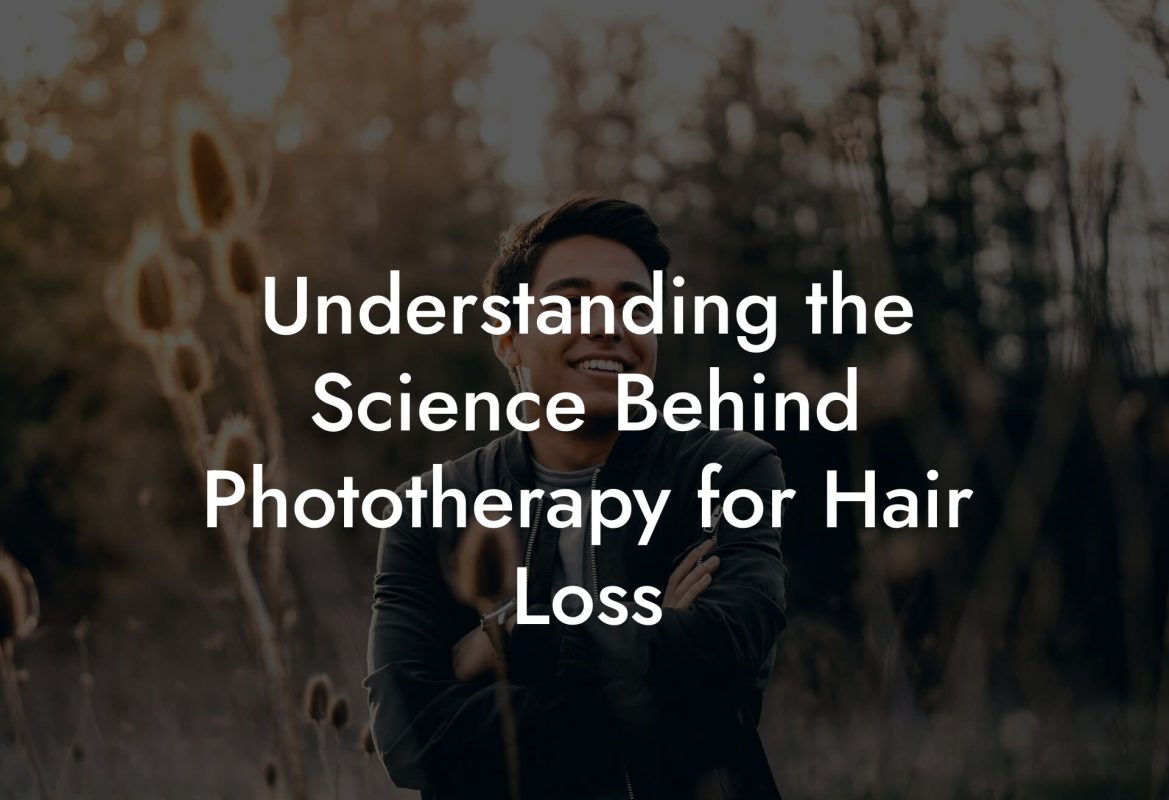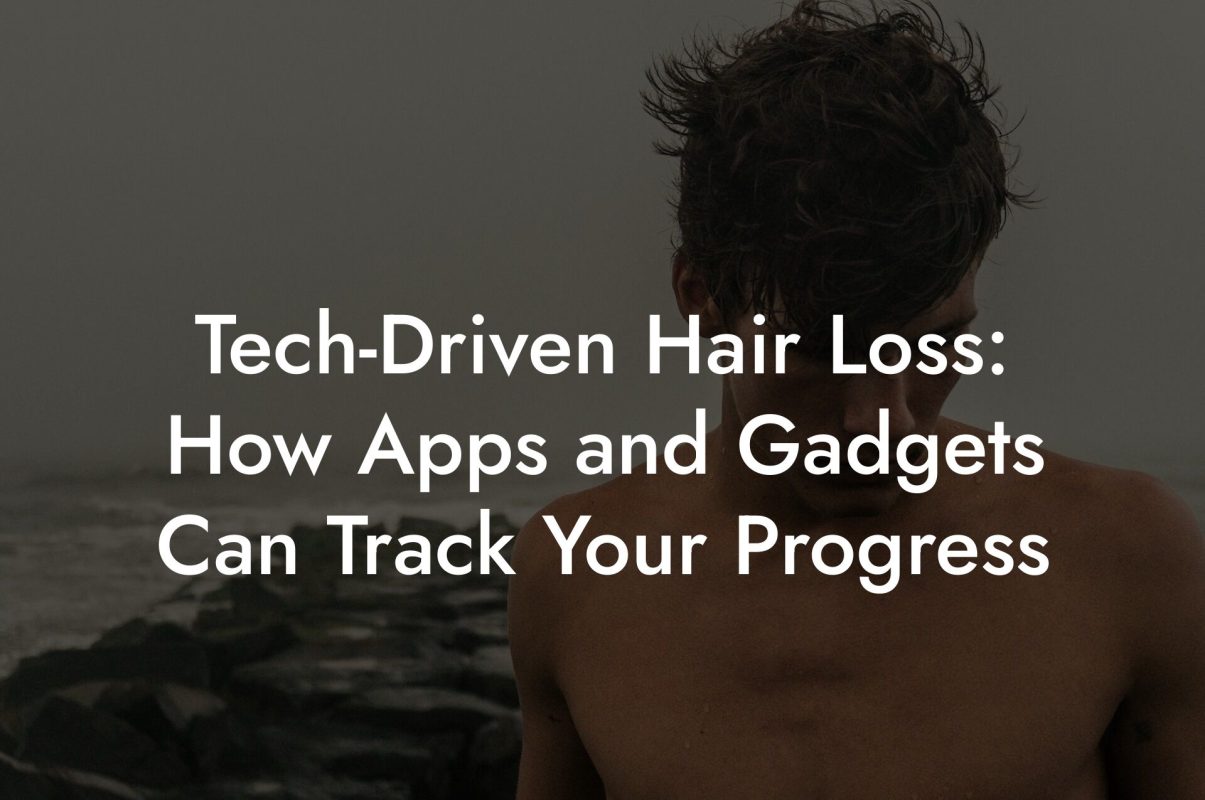Hair Loss Library
The Pros and Cons of Using Wearable Hair Loss Monitors
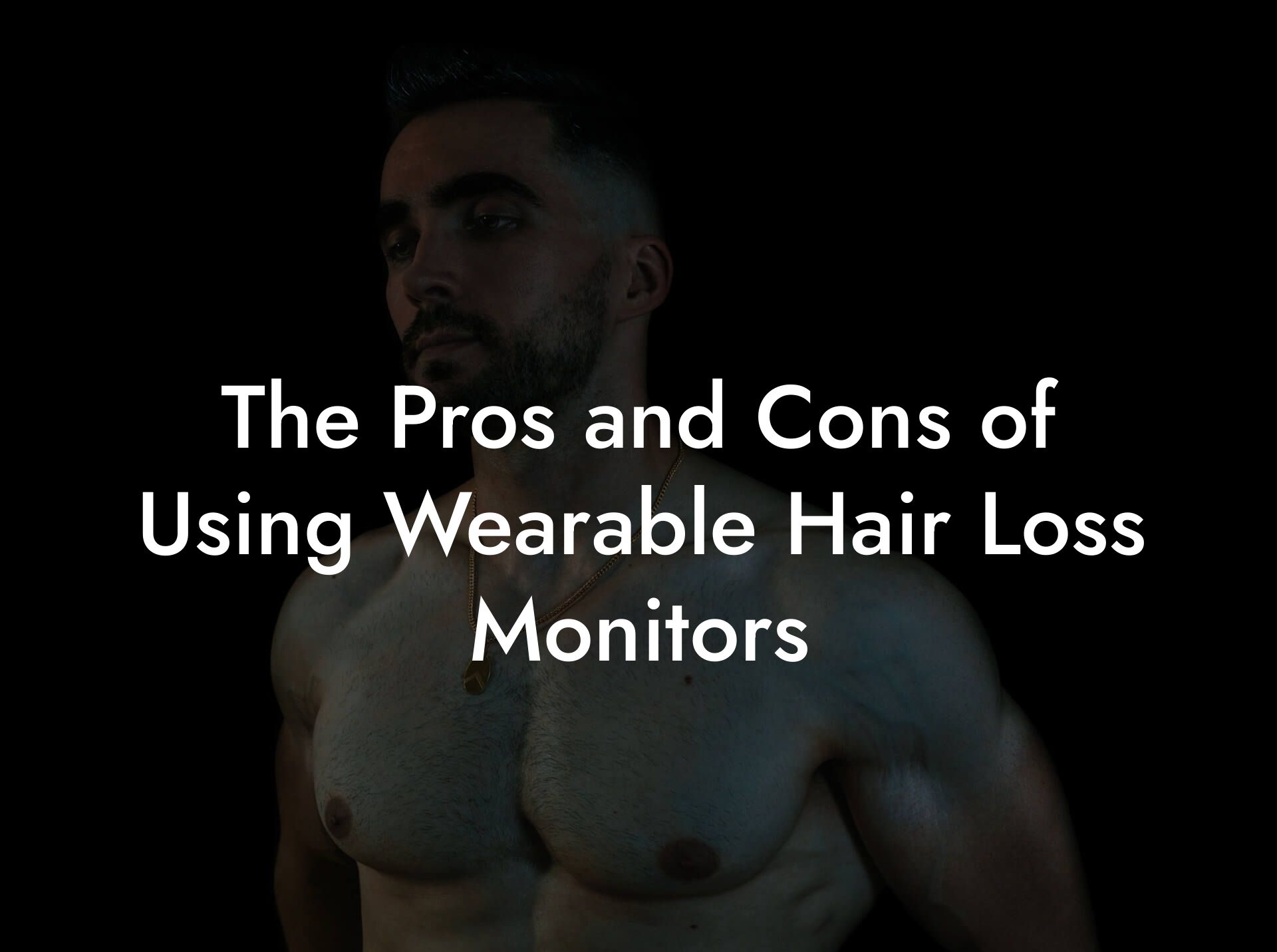
Ever wondered if your scalp could be your personal data hub—tracking every follicle like a top-secret mission? Welcome to the futuristic world of wearable hair loss monitors, a quirky blend of tech and tresses that’s turning heads (pun intended) in the realm of men’s hair care. Here at Mane Matrix, we’re all about giving you the real scoop on hair loss without the awkward medical small talk or sky-high price tags. Grab your favorite snack, settle in, and get ready to dive into a detailed journey exploring the ups and downs of these cutting-edge devices tailored for the modern millennial and Gen Z gent.
What Are Wearable Hair Loss Monitors?
Wearable hair loss monitors are the latest innovation in personal health tech, designed to keep a constant, unobtrusive eye on the health of your scalp. These little gadgets—often styled as headbands, smart caps, or even discreet patches—use a mix of sensors, artificial intelligence, and data analytics to track hair density, scalp conditions, and other key indicators of hair health. Think of them as the Fitbit for your follicles, ready to inform and empower you with data so you can take charge of your hair loss journey.
Instead of waiting until you notice a receding hairline in the mirror, wearable monitors provide continuous updates on your hair’s status. By analyzing factors like hair count, growth rate, and even moisture levels, these devices help demystify the complex processes behind hair loss—providing a clearer picture of what’s happening on your head. And yes, while the idea might sound a bit sci-fi, these monitors are increasingly accessible, user-friendly, and, best of all, discreet enough to wear in your everyday life.
The Tech Behind the Monitors: How Do They Work?
At the heart of wearable hair loss monitors is a blend of advanced sensor technology and smart data processing. These devices are equipped with high-resolution optical sensors and sometimes even laser-based technologies that map the scalp. Every scan captures detailed images and measurements, which are then analyzed using artificial intelligence and machine learning algorithms.
The process begins with a simple, non-invasive scan. As the sensor glides over your scalp, it captures data on hair density, strand thickness, and even detects any miniaturization of hair follicles—a common sign of androgenetic alopecia (male pattern baldness). This raw data is processed in real time by an onboard processor or paired smartphone app, providing you with a snapshot of your hair health history and trends.
Many devices also connect to cloud-based systems where your information is aggregated and compared against large datasets. This means your personal hair data isn’t analyzed in isolation—it’s benchmarked with readings from similar users, offering personalized insights and even forecasting potential future hair loss. The smart design behind these monitors not only makes hair tracking interactive but also turns it into a data-driven journey towards healthier, fuller hair.
Innovative Integration and User Experience
One of the coolest aspects of wearable hair loss monitors is how seamlessly they integrate with our digital lifestyles. Picture this: you wake up, check your phone, and along with your daily weather update, you get a quick snapshot of your scalp’s condition. The accompanying app displays graphs, trend lines, and even personalized recommendations to maintain or improve your hair health. Whether you’re a tech enthusiast or simply someone looking to stay ahead of hair loss, these monitors confirm that the future of self-care is all about convenience and customization.
Moreover, the design aesthetics of these devices appeal to a younger, style-conscious crowd. Gone are the days of clunky gadgets; today’s monitors are sleek, subtle, and crafted to double as a cool accessory. With various designs available, you can choose one that suits your personality—whether you’re going for a sporty vibe, a minimalist look, or something with a dash of futuristic flair. This convergence of technology, fashion, and health makes wearable hair loss monitors a hit among millennials and Gen Z alike.
Pros of Using Wearable Hair Loss Monitors
Like any modern tech gadget, wearable hair loss monitors come with a host of advantages that can make a significant difference in managing hair health. Let’s break down the main benefits in a way that’s both informative and, dare we say, fun.
Real-Time Tracking and Early Detection
One of the primary advantages is the ability to monitor your hair health in real time. These devices allow you to catch subtle changes before they escalate into full-blown hair loss. Early detection means you can make informed choices—ranging from lifestyle adjustments to lifestyle-enhancing treatments—and potentially slow down hair loss progression.
Personalized Data-Driven Insights
Gone are the “one-size-fits-all” solutions. With wearable monitors, the data collected is tailored just for you. By analyzing trends unique to your scalp, these devices offer personalized recommendations and treatment options. Whether it’s suggesting a new hair care product or advising on nutritional changes, they help you build a hair care routine that truly fits your needs.
Non-Invasive and User-Friendly
The beauty of wearable hair loss monitors is that they are non-invasive. There’s no need for cumbersome appointments or uncomfortable procedures. Simply wear the device, and let it do the hard work while you go about your day. For those who dread needles or invasive tests, this technology is a breath of fresh air.
Seamless Integration with Digital Life
Integrated with your favorite smartphone apps, these monitors make it easy to visualize and understand your hair health trends. Detailed graphs, progress reports, and even community comparisons give you a more comprehensive insight into your condition. Plus, the social sharing features let you join the conversation with other hair loss warriors.
Empowerment Through Knowledge
Knowledge is power, and wearable monitors empower you with the data you need to address hair loss proactively. They take the mystery out of hair health, transforming guessing games into well-informed decisions. Whether you’re just starting to notice thinning hair or already on a treatment plan, the insights provided can be a game changer.
Convenience of Wearable Tech
With these devices, you have a mini hair lab on your head—literally. Their lightweight and discreet designs mean you can wear them throughout your day without feeling like a science experiment. They slip into your tech-savvy routine, making hair care an accessible part of your modern lifestyle.
Cons of Using Wearable Hair Loss Monitors
As revolutionary as they are, wearable hair loss monitors aren’t without their quirks. Here are some of the potential downsides to keep in mind:
Accuracy and Calibration Concerns
While these devices are designed with advanced technology, there can be occasional discrepancies in data accuracy. Factors like sensor misalignment, improper usage, or even a bad hair day can lead to inconsistent readings. Over-reliance on data without professional confirmation might occasionally lead to unnecessary worry.
Privacy and Data Security Issues
In our digital age, data privacy is on everyone’s mind. With wearable monitors collecting sensitive information about your personal health, there’s always a risk of data breaches or misuse. It’s crucial to choose a device and app that prioritize strict data security measures.
High Initial Investment
Cutting-edge technology often comes with a price tag. For some, the cost of a wearable hair loss monitor might be a significant investment, especially if insurance doesn’t cover it. While prices are expected to drop as the technology becomes more mainstream, the initial expense can be a barrier for many.
User Dependency and Over-Reliance on Technology
Relying too heavily on these devices might lead to anxiety or obsessive tracking—a phenomenon sometimes referred to as “data fatigue.” Your monitor might suggest that every minor fluctuation is a cause for concern, which could lead to unnecessary stress. Remember, technology is a tool meant to assist you, not to dominate your mental space.
Limited Scope of Information
Although wearable monitors provide valuable data on hair density and scalp condition, they may not capture the full spectrum of factors affecting hair loss. Genetics, hormonal imbalances, and external environmental influences also play significant roles that these devices might not address comprehensively.
Compatibility and Integration Issues
Not every monitor works flawlessly with all smartphones or health apps. Compatibility issues can sometimes hinder the seamless integration that many users expect from their tech gadgets. This could result in frustration if your data fails to sync properly or the device’s app lacks frequent updates.
Potential for Misinterpretation
Another challenge lies in translating raw data into actionable insights. Without proper guidance, users might misinterpret the readings, potentially leading to inappropriate self-treatment or overuse of certain products. This emphasizes the need for professional consultation to balance data with expert advice.
Weighing the Benefits Against the Drawbacks
Before you rush off to buy the latest wearable hair loss monitor, it’s essential to balance the glowing pros with some realistic cons. On one hand, these devices offer unprecedented insight, enabling early action and personalized strategies to combat hair loss. On the other, they come with challenges like data accuracy, privacy concerns, and a hefty price tag that might not be for everyone.
The decision to invest in this technology ultimately hinges on your individual needs, lifestyle, and comfort level with integrating high-tech solutions into your health routine. For the tech-savvy man who values data-driven decisions and proactive health management, the benefits might outweigh the risks. However, if you prefer a more traditional approach or are wary of digital tracking, you might want to tread cautiously.
What’s clear is that innovation is giving us more tools than ever before to understand and manage hair loss. By demystifying this once opaque process, wearable hair loss monitors invite you to delve deeper into your personal health data and transform uncertainty into informed action.
Technology Meets Style: The Aesthetic Aspect
In the age of Instagram-ready moments and Pinterest-perfect setups, it’s not just about function—it’s also about fashion. The latest wearable hair loss monitors are designed with style in mind. Gone are the days of bulky headgear that scream “medical device.” Today’s monitors are sleek, modern, and built to complement your everyday look.
Many companies invest in ergonomic designs, offering options that range from athletic performance headbands to stylish smart caps that look like a natural extension of your wardrobe. By bridging the gap between technology and aesthetics, these devices prove that you can be on the cutting edge of both health and style.
The design element significantly reduces any stigma associated with tracking your hair health. Instead of feeling self-conscious about wearing a headband that monitors your follicles, you can enjoy a subtle accessory that sparks conversations and might even earn you a nod of tech-savvy approval at your next social gathering.
Case Studies: Real-Life Experiences with Wearable Hair Loss Monitors
Let’s take a peek into some real-life scenarios where wearable hair loss monitors have made a tangible difference.
Case Study 1: From Worry to Wisdom
Meet Alex, a 29-year-old software developer who started noticing slight thinning at his temple. Rather than resorting to drastic measures right off the bat, he decided to try a wearable hair loss monitor. Over several months, Alex’s device tracked subtle changes in his scalp that he never would have noticed on his own. Armed with data, he tweaked his diet, adjusted his stress management routines, and even experimented with a few clinically approved topical treatments. The result? A noticeable stabilization in hair loss and a newfound sense of empowerment—Alex now treats his monitor as his personal hair coach.
Case Study 2: A High-Tech Approach to Preventative Care
Then there’s Marcus, a 34-year-old marketing executive who prides himself on staying ahead of the curve. Always on the hunt for innovative solutions, Marcus embraced a wearable hair loss monitor as part of his daily health regimen. The continuous data feed helped him detect early signs of scalp stress due to high work pressure and erratic sleep patterns. With actionable insights from his device, Marcus was able to adjust his lifestyle—prioritizing sleep and managing stress better—which, in turn, contributed to improved hair health. For Marcus, the monitor wasn’t just a gadget; it was a personalized wellness partner.
Case Study 3: Balancing Beauty and Data
Lastly, consider Jake, a 27-year-old fitness enthusiast who loves all things high-tech. Jake’s passion for both fitness and innovation led him to experiment with a wearable hair loss monitor. Initially skeptical, he soon discovered that keeping tabs on his scalp health provided data insights that helped him fine-tune not just his hair care, but his overall wellness routine. Despite the occasional false alarm—like a particularly humid day throwing off sensor readings—Jake found that the benefits of being in the know far outweighed the minor inconveniences.
These case studies illustrate that while wearable hair loss monitors might not be a magic bullet, they can serve as valuable tools in a broader, proactive strategy for managing hair health. The key is to use them as part of a comprehensive approach that includes proper nutrition, stress management, and, when necessary, professional consultation.
Integrating Wearable Hair Loss Monitors Into Your Daily Routine
So, how do you make wearable hair loss monitors an effective part of your daily life? The secret lies in consistency and integration. These gadgets are designed to work seamlessly with your rhythm of life, but a few extra tips can ensure you get the most bang for your buck.
Step 1: Set Up Your Device for Success
Follow the manufacturer’s guidelines to ensure your device is properly calibrated. This means positioning it correctly, syncing it with your smartphone app, and conducting an initial baseline scan. A well-calibrated device lays the foundation for accurate tracking.
Step 2: Establish a Routine
Consistency is key. Just like your morning coffee or evening workout, make it a habit to check your device’s readings at the same time every day. This regularity helps smooth out any anomalies in the data and gives you a clearer understanding of trends over time.
Step 3: Use the Data to Inform Your Actions
Don’t just stare at the numbers—use them! Let your device’s insights guide changes in your lifestyle. Perhaps adjust your diet, tweak your hair care routine, or experiment with stress management techniques based on what your monitor tells you. Over time, these small changes can lead to significant improvements.
Step 4: Seek Professional Input When Needed
While data is powerful, it’s important to balance it with expert advice. If your monitor indicates a worrying trend, consider consulting a professional. Combining data with the insights of a hair loss specialist can ensure that you’re making informed, beneficial decisions.
By incorporating wearable hair loss monitors into a balanced routine, you transform them from a mere gadget into an integral part of your overall health strategy—helping you stay proactive about your hair’s future.
Resources and Community Support: Your Next Steps
Ready to take the plunge into the world of proactive hair care? You’re not alone. There’s a wealth of resources and a thriving community of like-minded individuals who are embracing technology to tackle hair loss head-on. Here are some next steps you can follow:
Join Online Communities
Social media and dedicated forums are brimming with discussions on the latest wearable hair loss monitors, treatment strategies, and personal success stories. Engaging with these communities on platforms like Reddit, specialized Facebook groups, or even Instagram can provide you with firsthand advice and inspiration.
Stay Updated With Expert Blogs and Podcasts
At Mane Matrix, our team of hair loss experts regularly shares data-driven insights and breakthrough treatment options tailored specifically for men. Follow blogs, subscribe to podcasts, and read up on the most recent scientific studies related to hair health—all from the comfort of your digital device.
Consult with Professionals Online
While wearable monitors offer a neat slice of hair health data, nothing beats the guidance of seasoned professionals. Many telemedicine platforms now offer remote consultations, allowing you to get expert advice without stepping into a clinic. This is especially handy if you’re feeling a bit overwhelmed by the tech or need personalized recommendations.
Experiment With Complementary Treatments
Consider pairing your wearable monitor insights with other hair care practices such as scalp massages, new shampoos, or even targeted nutritional supplements. A multi-pronged approach often yields the best results, whether you’re looking to slow hair loss or stimulate new growth.
Embracing a community-centric and resource-rich approach means that every piece of data your device gathers becomes part of a larger, informed strategy—empowering you to take control of your hair’s destiny with confidence and clarity.
Future Trends: What’s Next in Hair Health Tech?
The rapid pace of technological innovation means that wearable hair loss monitors are just the beginning. As machine learning, advanced imaging, and biometrics continue to evolve, the future of hair health tech looks exceptionally promising. Imagine devices that not only monitor your hair loss but also prescribe personalized treatments in real time or even alert you to changes in your scalp health long before they become visible.
With research and development coming out of the tech and biotech sectors at a breakneck pace, the next wave of innovations could include integrated systems that combine genetic data, stress management, and even environmental factors to offer a 360-degree view of your hair health. The integration of these diverse data sources promises to open up new frontiers in personalized medicine for hair loss—a prospect that’s especially exciting for those who like to stay ahead of the curve.
Looking forward, what remains clear is that the future of hair loss management will likely be defined by a fusion of technology, lifestyle, and personalized care—ensuring that you’re never in the dark about your hair’s well-being.
Frequently Asked Questions About Wearable Hair Loss Monitors
Below are some of the most common questions we receive about wearable hair loss monitors. These answers are designed to give you clarity and confidence as you navigate this innovative technology.
1. What exactly is a wearable hair loss monitor?
A wearable hair loss monitor is a tech device, often built into a headband or cap, that uses sensors and AI to track and analyze the health of your scalp and hair. It provides real-time data to help you understand hair density, growth patterns, and potential issues.
2. How accurate are these devices?
While wearable monitors employ advanced sensor technology, occasional discrepancies can occur due to calibration or user error. They are best used as a complementary tool rather than a standalone diagnostic instrument.
3. Do wearable monitors require a prescription?
No, these devices are generally available over the counter. However, if you have concerns about your hair health, consulting with a healthcare professional is always recommended.
4. Can wearables detect the early stages of hair loss?
Yes, one of their main benefits is early detection. Continuous tracking can spot subtle changes before hair loss becomes visibly noticeable.
5. Is my data safe with these devices?
Data security is a top priority for reputable manufacturers. It’s crucial to choose a device with robust privacy protocols and transparent data management policies.
6. Will my monitor work with my smartphone?
Most wearable hair loss monitors are designed to integrate seamlessly with both iOS and Android smartphones via dedicated apps for easy data viewing and management.
7. Can the insights from a monitor replace professional advice?
While the data provided is valuable, it should complement—not replace—the insights of hair loss specialists. Professional consultations remain important, especially for significant concerns.
8. How often should I use a wearable hair loss monitor?
Consistent daily monitoring is ideal for tracking trends accurately. Most users integrate it into their morning or evening routine.
9. Are wearable monitors uncomfortable to wear?
No, these devices are designed with comfort in mind. They are lightweight, ergonomic, and intended for long-term daily use without causing discomfort.
10. What should I do if the monitor shows unexpected results?
If you notice unusual data trends, consider re-calibrating your device or consulting a healthcare professional to rule out any underlying issues.
Your Path Forward: Embrace the Future of Hair Health
The journey to maintaining and enhancing your hair health is as dynamic and unique as you are. Wearable hair loss monitors represent a radical shift in how we approach self-care—melding real-time data, innovative technology, and forward-thinking design into one seamless experience. Whether you’re a data-driven early adopter or simply curious about smarter ways to tackle hair loss, these devices offer a fascinating prospect: that with the right tools, you can be your own hair health champion.
At Mane Matrix, we believe in empowering men with information and options that fit naturally into today’s fast-paced, digitally connected lifestyle. Embracing wearable hair loss monitors doesn’t mean surrendering to technology; it means using it to reclaim control over what matters most—your confidence, your style, and your future.
So why not take that next step, explore the options, and join the vibrant community of men who are redefining what it means to manage hair loss? With informed decisions and cutting-edge tech by your side, you’re all set to turn the page on old worries and write a bold new chapter for your hair.
Your future is bright, your hair journey is in your hands, and the possibilities are as limitless as the data at your fingertips. Embrace the modern era of hair health, and let your confidence flourish with every strand.
If you loved this article... Dive deeper into the world of mens hair loss with our most popular sections. If there is anything you think is missing or anything you would love for us to write about, just give us a shout.
The Best At-Home Laser Devices for Men’s Hair Loss: A Comprehensive Review
Understanding Low-Level Laser Therapy: How It Promotes Hair Regrowth
Innovative Hair Growth Devices: What’s New in the Market?
A Closer Look at Robotic Hair Transplant Technology
The Future of Hair Restoration: Breakthrough Technologies to Watch
Microneedling Tools: How They Work and Which Ones Deliver Results
Scalp Stimulation Equipment: Are They Worth the Investment?
Comparing At-Home vs. In-Clinic Hair Restoration Devices
Tech-Driven Hair Loss: How Apps and Gadgets Can Track Your Progress
Understanding the Science Behind Phototherapy for Hair Loss
How to Use a Derma Roller for Better Hair Growth: A Step-by-Step Guide
Expert Reviews: The Top Hair Growth Devices of the Year
Smart Hair Tools: Integrating Technology with Your Daily Routine
Cutting-Edge Equipment: How New Tools Are Changing Hair Restoration
The Role of AI in Predicting and Treating Hair Loss
User Experiences: Real Stories from At-Home Hair Restoration Device Users
A Tech Enthusiast’s Guide to the Best Hair Growth Gadgets
Innovative Scalp Massagers: Do They Really Boost Hair Growth?
The Pros and Cons of Using Wearable Hair Loss Monitors
How to Set Up an Effective At-Home Hair Restoration Routine with Tech Tools





